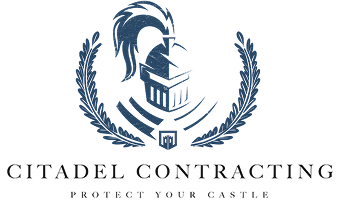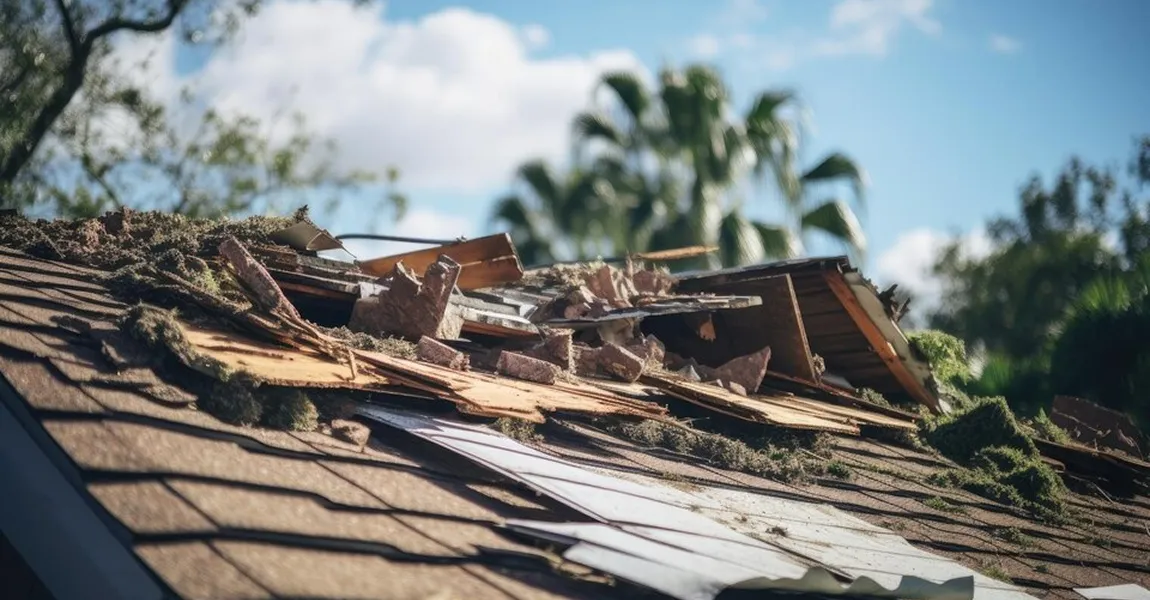Your roof protects your home from wind, rain, and extreme temperatures, but over time, it naturally wears down. While normal wear and tear happens gradually, storm damage can occur suddenly and cause major problems. Knowing the difference between the two can help you decide whether you need routine maintenance or immediate repairs.
For homeowners in North Carolina, where hurricanes, thunderstorms, and strong winds are common, understanding these signs is essential. This guide will help you identify storm damage vs. wear and tear, so you know when to call a professional roofer.
Shingle Damage: Gradual Aging vs. Storm Impact
Shingles are your roof’s first layer of protection, but both time and severe weather can weaken them.
Normal Wear and Tear:
- Shingles slightly curled at the edges due to long-term sun exposure.
- Small cracks or minor surface granule loss over time.
- Fading color from years of UV exposure.
Storm Damage:
- Missing or broken shingles after high winds or hail.
- Large patches of granule loss in one area.
- Dents or cracks caused by hail impact.
North Carolina homeowners should be especially mindful after hurricanes or strong thunderstorms. Areas like Raleigh, Charlotte, and Wilmington often experience high winds that can loosen or rip off shingles in an instant.
Roof Leaks: A Slow Problem or a Sudden Emergency?
Roof leaks can start small and get worse over time, or they can appear suddenly after a storm.
Normal Wear and Tear:
- Slow-developing water stains on ceilings or walls.
- Small leaks form around vents or chimneys.
- Aged or cracked sealant around flashing.
Storm Damage:
- Immediate leaks appear after a storm.
- Dripping water from ceilings or light fixtures.
- Pools of water in the attic following heavy rain.
If a leak appears right after a storm, it is likely storm-related and requires urgent storm damage repair. Delaying repairs could lead to mold growth, wood rot, and interior damage.
Gutter and Downspout Issues
Your gutters play a key role in directing water away from your home, but both time and weather can cause damage.
Normal Wear and Tear:
- Slow buildup of leaves and debris.
- Small rust spots or loose connections.
- Minor sagging from gradual stress.
Storm Damage:
- Gutters detached or bent from strong winds.
- Heavy debris clogging downspouts after a storm.
- Large amounts of shingle granules are collected in gutters after hail.
After a major storm, homeowners in Fayetteville and Greensboro often find their gutters filled with shingle granules, which is a sign that the protective layer of their roof has been stripped away.
Flashing and Chimney Damage
Flashing is a thin metal material that seals gaps around chimneys, vents, and skylights to prevent leaks. Over time, it can weaken, but storms can also cause sudden damage.
Normal Wear and Tear:
- Cracked or brittle flashing due to long-term sun exposure.
- Small gaps form around the chimney.
- Minor rust or corrosion over time.
Storm Damage:
- Torn or missing flashing after high winds.
- Large gaps allow water to seep into the home.
- Chimney bricks become loose or displaced.
If flashing damage is not repaired quickly, it can lead to severe water damage inside your home.
Structural Damage: Subtle Weakening vs. Sudden Impact
A strong, well-maintained roof should hold its shape. If you notice sagging or major changes in your roof’s structure, it is a sign of a serious problem.
Normal Wear and Tear:
- Gradual softening of wood due to moisture over decades.
- Minor sagging in areas exposed to high humidity.
- Small cracks in the roof deck from natural aging.
Storm Damage:
- Sudden sagging in parts of the roof after heavy snowfall or rain.
- Large sections of roofing material were torn away.
- Structural shifting due to fallen trees or debris.
In coastal areas of North Carolina, where hurricanes are common, it is especially important to check for hidden structural damage after storms.
When to Call a Roofer
If your roof shows signs of aging, regular maintenance may be enough to extend its life. However, if a storm has caused sudden damage, immediate repairs are necessary to prevent further issues.
Call a Roofer If You Notice:
- Missing or broken shingles after high winds.
- Leaks appear right after a storm.
- Dented, bent, or torn flashing.
- A sagging roofline or structural shifts.
- A sudden increase in energy bills due to poor insulation.
If you suspect storm damage, scheduling a professional roof inspection can help you catch problems early.
Protect Your Home with Expert Roof Repairs
Recognizing the difference between storm damage vs. wear and tear can help you avoid costly repairs and protect your home. If your roof has suffered damage from severe weather, fast action is crucial.
For homeowners in North Carolina, storm damage repair services can restore your roof and prevent further problems. Contact a trusted local roofing expert to assess the damage and recommend the best solutions.
Taking care of roof damage early ensures your home stays safe, secure, and weatherproof for years to come.










